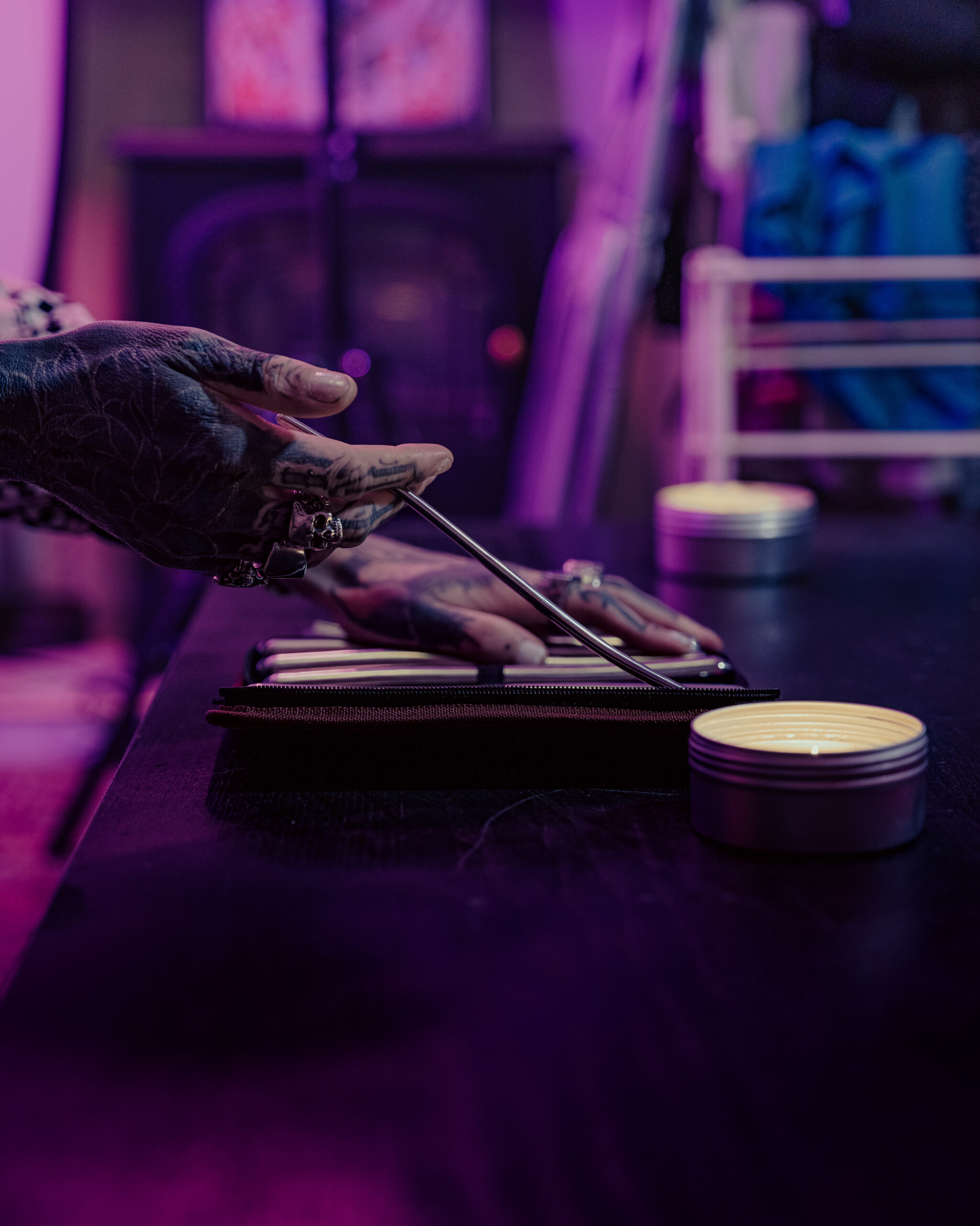The Truth Behind Ghosting: Why People Do It And How It Affects You

The Psychological Factors Behind Ghosting
Ghosting, the abrupt cessation of communication without explanation, has become a common phenomenon in modern dating. Understanding the psychological factors that drive this behavior is crucial for navigating the emotional complexities it presents. From fear of confrontation to social anxiety and cognitive biases, a range of psychological mechanisms contribute to why individuals choose ghosting as a means of ending relationships.
Fear of Conflict
Ghosting, the abrupt cessation of communication without explanation, has become a common phenomenon in modern dating. Understanding the psychological factors that drive this behavior is crucial for navigating the emotional complexities it presents. From fear of confrontation to social anxiety and cognitive biases, a range of psychological mechanisms contribute to why individuals choose ghosting as a means of ending relationships.

One significant factor is the pervasive fear of conflict. Many individuals find confronting others uncomfortable and emotionally taxing. Ending a relationship through direct communication often involves navigating difficult conversations and potentially experiencing emotional distress from both parties. Ghosting provides an easy escape, allowing individuals to avoid the perceived discomfort of a direct confrontation.
- Social anxiety can also play a role in ghosting behavior. Individuals with social anxiety may find it overwhelming to initiate or engage in difficult conversations, particularly those involving emotional topics such as relationship endings.
- Cognitive biases, such as the “illusion of invulnerability,” contribute to ghosting tendencies. This bias leads individuals to underestimate the potential negative consequences of their actions and overestimate their ability to avoid conflict or discomfort.
Lack of Empathy
The avoidance of confrontation is a key driver in ghosting behavior. Many people find it incredibly difficult to have uncomfortable conversations, especially when ending relationships. Ghosting provides an easy way out, allowing individuals to escape the emotional intensity of direct communication.
Social anxiety can also contribute to this behavior. Individuals who struggle with social situations may find it overwhelming to engage in difficult conversations about relationship endings.

Additionally, cognitive biases play a role. For example, the “illusion of invulnerability” leads people to believe they are immune from experiencing negative consequences from their actions. This can make ghosting seem like a less risky option.
Low Emotional Investment
Ghosting, a prevalent phenomenon in modern dating, is fueled by a complex interplay of psychological factors.
Fear of conflict often serves as a primary motivator. Many individuals find direct confrontation emotionally challenging and prefer to avoid the discomfort associated with difficult conversations, especially those involving relationship endings.
Social anxiety can also contribute to ghosting behavior. Individuals with social anxiety may experience overwhelming distress when faced with situations requiring emotional vulnerability or navigating potentially uncomfortable interactions.
Cognitive biases further influence this tendency. The “illusion of invulnerability,” for instance, leads individuals to underestimate the potential negative consequences of their actions and overestimate their ability to avoid emotional fallout.
Personal Insecurity
Ghosting, the abrupt ending of communication without explanation, is a common experience in modern dating. This behavior stems from a complex interplay of psychological factors that influence how individuals navigate relationships and handle conflict.
One prominent factor is the pervasive fear of confrontation. Many people find it incredibly difficult to engage in difficult conversations, especially those involving relationship endings. Direct communication requires emotional vulnerability and the potential for negative reactions, which can be anxiety-provoking. Ghosting offers a seemingly painless escape from this discomfort.
Social anxiety also plays a role. Individuals with social anxiety often experience heightened distress in social situations, particularly those requiring emotional expression or interaction. Initiating or engaging in conversations about relationship endings can be overwhelmingly challenging for them, leading to avoidance through ghosting.
Cognitive biases further contribute to ghosting tendencies. The “illusion of invulnerability” is a common cognitive bias that leads people to underestimate the potential negative consequences of their actions and overestimate their ability to avoid discomfort or conflict. This can make ghosting seem like a less risky option, as individuals believe they are immune from experiencing the emotional fallout.
Understanding these psychological factors is crucial for navigating the emotional complexities of ghosting. Recognizing that this behavior often stems from deeply rooted fears and anxieties can help to foster empathy and compassion while also promoting healthier communication patterns in relationships.
Social and Cultural Influences
The English language, a dynamic tapestry woven with cultural threads, constantly evolves under the influence of social norms, values, and beliefs. From slang terms to grammatical structures, these influences shape how we communicate, express ourselves, and understand the world around us.
Normalize Disengagement
Social and cultural influences exert a profound impact on language, shaping its evolution and usage. Language is not static but rather a living entity, constantly adapting to societal shifts, technological advancements, and evolving social values.
Cultural norms dictate acceptable vocabulary, tone, and even grammatical structures. For example, direct communication might be valued in some cultures, while indirectness or subtlety may be preferred in others. tail plugs furry These cultural nuances are reflected in the language used within those societies.
Technological advancements also play a significant role in shaping language. The rise of social media, texting, and instant messaging has led to the emergence of new slang terms, abbreviations, and online communication styles.
Language is a powerful tool that reflects and reinforces societal values and beliefs. It can perpetuate stereotypes, express cultural identities, and contribute to the formation of social groups. Understanding the interplay between language and culture is essential for effective communication, cross-cultural understanding, and appreciating the diversity of human expression.
Digital Communication Ease
Social and cultural influences profoundly shape the English language. From slang terms to grammatical structures, these influences are constantly evolving and adapting to societal shifts, technological advancements, and changing social values.
Cultural norms dictate acceptable vocabulary, tone, and even grammatical structures. For example, direct communication might be valued in some cultures, while indirectness or subtlety may be preferred in others. These cultural nuances are reflected in the language used within those societies.
Technological advancements also play a significant role in shaping language. The rise of social media, texting, and instant messaging has led to the emergence of new slang terms, abbreviations, and online communication styles.
Language is a powerful tool that reflects and reinforces societal values and beliefs. It can perpetuate stereotypes, express cultural identities, and contribute to the formation of social groups. Understanding the interplay between language and culture is essential for effective communication, cross-cultural understanding, and appreciating the diversity of human expression.
The Impact of Ghosting on the Ghosted Person
Ghosting, the act of abruptly ending all communication without explanation, has become a pervasive issue in modern dating. The emotional impact on the person who is ghosted can be profound, leaving them feeling confused, rejected, and hurt.
Emotional Distress
The abrupt cessation of communication without explanation, commonly known as ghosting, leaves those left behind grappling with a range of intense emotions. A sense of confusion often pervades, as the ghosted individual struggles to understand why the relationship has ended so suddenly and without closure. This lack of closure can fuel feelings of rejection and inadequacy, leading to self-doubt and questioning their own worth.
The emotional distress caused by ghosting extends beyond initial hurt and confusion. It can trigger anxiety, as the ghosted individual may worry about what happened and why they were abandoned. This uncertainty can lead to rumination and intrusive thoughts, further exacerbating emotional distress.
Furthermore, ghosting can damage self-esteem and create a sense of vulnerability. Being suddenly cut off without explanation can make an individual feel insignificant and disposable, leading to feelings of insecurity and a diminished sense of self-worth.
Self-Esteem Issues
Ghosting can have a significant negative impact on the self-esteem of the ghosted person. The abrupt end of communication without any explanation leaves them feeling rejected and unworthy.
When someone ghosts another person, it sends a clear message that they are not valued or important enough to deserve an honest conversation. This can lead to feelings of low self-worth and insecurity, especially if the ghosted individual was already struggling with their self-esteem.
The lack of closure provided by ghosting can also exacerbate these issues. Without understanding why the relationship ended, the ghosted person may ruminate on their perceived flaws and wonder what they did wrong. This cycle of self-blame and introspection can further damage their self-confidence.
It’s important to remember that ghosting is a reflection of the ghoster, not the ghosted. The decision to avoid difficult conversations and end relationships abruptly stems from the ghoster’s own insecurities and avoidance tendencies. It has nothing to do with the worth or value of the person being ghosted.
Trust and Relationship Concerns
Ghosting leaves the ghosted individual questioning their self-worth and wondering what they did wrong, which can significantly damage their trust in future relationships. rechargeable
The sudden and unexplained termination of communication erodes the foundation of trust that is essential for any healthy relationship. When someone ghosts another person, it conveys a lack of respect, consideration, and emotional maturity.
This breach of trust can make it difficult for the ghosted individual to believe in the sincerity of future partners and may lead them to approach new relationships with guardedness and suspicion.
The fear of being hurt or abandoned again can create a cycle of anxiety and avoidance, making it challenging to form meaningful connections.
Coping with Being Ghosted
Ghosting, the sudden and unexplained cessation of communication, has become an unwelcome reality in modern dating. The abrupt nature of this experience can leave individuals feeling confused, hurt, and questioning their own worth.
Acceptance and Self-Compassion
Coping with being ghosted can be incredibly difficult. It’s natural to feel hurt, angry, and confused when someone suddenly cuts off communication without explanation. However, it’s important to remember that ghosting is a reflection of the other person’s avoidance tendencies and insecurities, not a reflection of your worth.
One crucial step in healing from being ghosted is practicing self-compassion. Acknowledge your pain and allow yourself to feel the emotions that arise. Treat yourself with the same kindness and understanding that you would offer a friend going through a similar experience. stim gels trusted condoms UK
Avoid dwelling on what went wrong or trying to analyze the other person’s motivations. It’s often impossible to know for sure why someone ghosts, and focusing on these unknowns will only prolong your pain. Instead, focus on your own well-being and healing.
Engage in activities that bring you joy and help you cope with difficult emotions. Spend time with supportive friends and family, pursue hobbies, or engage in self-care practices that nourish your mind and body.
Remember that being ghosted does not define you. You are worthy of love, respect, and healthy relationships. Allow yourself time to heal and move forward, knowing that you deserve better than someone who chooses to avoid difficult conversations and emotionally shut down. unscented gel
Focus on Personal Growth
Ghosting can be a deeply painful experience, leaving you feeling confused, rejected, and questioning your worth. It’s important to remember that ghosting is a reflection of the other person’s inability to handle conflict and their lack of emotional maturity, not a reflection of your value as a person.
While it’s natural to dwell on what went wrong and seek closure, focusing on these questions will only prolong your pain. Instead, shift your focus inward. Use this experience as an opportunity for personal growth.
Embrace self-reflection. Consider what you learned from the relationship, both positive and negative. What are your needs in a healthy relationship? What boundaries do you want to set moving forward?
Channel your energy into nurturing yourself. Engage in activities that bring you joy, spend time with supportive people, and prioritize self-care. Remember, your worth is not determined by the actions of someone who chose to ghost you.
Use this experience as a springboard for building stronger, healthier relationships in the future. You deserve to be with someone who communicates openly and honestly, values your presence, and treats you with respect.
Reframing the Experience
Ghosting is a deeply painful experience that can leave lasting emotional scars. It’s natural to feel confused, rejected, and hurt when someone abruptly ends all communication without explanation. But it’s important to remember that ghosting is a reflection of the ghoster’s avoidance tendencies and insecurities, not a reflection of your worth.
Instead of dwelling on what went wrong or seeking closure from someone who is unwilling to provide it, focus on your own healing and growth. Practice self-compassion, allow yourself to feel your emotions, and treat yourself with kindness. Surround yourself with supportive people, engage in activities that bring you joy, and prioritize your well-being.
Remember, you deserve to be treated with respect and have your feelings acknowledged. Ghosting is a sign that this person wasn’t capable of giving you the kind of relationship you deserve. Use this experience as an opportunity to learn about your own needs and boundaries in relationships and move forward with confidence. You are worthy of love, connection, and healthy, fulfilling relationships.
the anvil sex
Read the blog and learn more
Check out the full feature





























